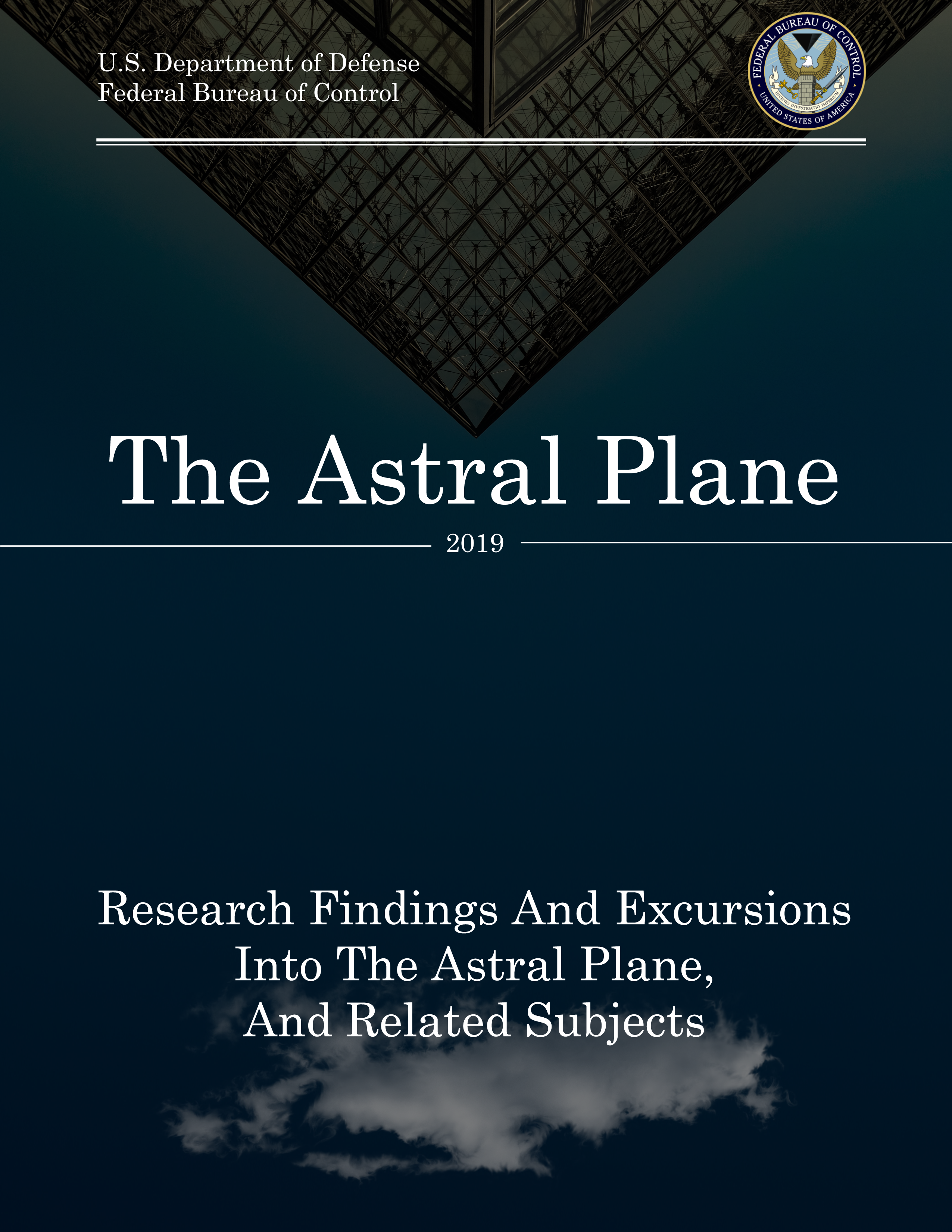Presentation 05.1 with Dr. Casper Darling
Introduction
The Astral Plane is an alternate dimension tied to the Oldest House. While the true nature of the astral plane is uncertain, it is of vital importance to the Bureau, particularly due to its connection to Objects of Power, which enable parautilitarians to wield their powers when bound.
The astral plane is the home of the Board, a mysterious paranatural entity which guides the Bureau from the shadows.
In many religions and philosophies, the astral plane is an immaterial realm of existence, a threshold between the world of the living and the afterlife, through which the souls of the dead pass. It is alternatively viewed as the totality of the spirit realm, a vast meta-reality in which all consciousness resides.
FBC academics have theorized that the astral plane is not dissimilar to what the SCP Foundation refers to as the noosphere, the summary result of all human thought, connection, and interactions. For more information, see “noosphere.”
Theories, the Astral Plane
Noosphere
In the theory of Vernadsky, the noosphere is the third in a succession of phases of development of the Earth, after the geosphere (inanimate matter) and the biosphere (biological life). Just as the emergence of life fundamentally transformed the geosphere, the emergence of human cognition fundamentally transforms the biosphere. In contrast to the conceptions of the Gaia theorists, or the promoters of cyberspace, Vernadsky’s noosphere emerges at the point where humankind, through the mastery of nuclear processes, begins to create resources through the transmutation of elements. It is also currently being researched as part of the Princeton Global Consciousness Project.
Teilhard perceived a directionality in evolution along an axis of increasing Complexity/Consciousness. For Teilhard, the noosphere is the sphere of thought encircling the earth that has emerged through evolution as a consequence of this growth in complexity / consciousness. The noosphere is therefore as much part of nature as the barysphere, lithosphere, hydrosphere, atmosphere, and biosphere. As a result, Teilhard sees the “social phenomenon [as] the culmination of and not the attenuation of the biological phenomenon.” These social phenomena are part of the noosphere and include, for example, legal, educational, religious, research, industrial and technological systems. In this sense, the noosphere emerges through and is constituted by the interaction of human minds. The noosphere thus grows in step with the organization of the human mass in relation to itself as it populates the earth. Teilhard argued the noosphere evolves towards ever greater personalization, individuation and unification of its elements. He saw the Christian notion of love as being the principal driver of noogenesis. Evolution would culminate in the Omega Point—an apex of thought/consciousness—which he identified with the eschatological return of Christ.
One of the original aspects of the noosphere concept deals with evolution. Henri Bergson, with his L’évolution créatrice (1907), was one of the first to propose evolution is “creative” and cannot necessarily be explained solely by Darwinian natural selection. L’évolution créatrice is upheld, according to Bergson, by a constant vital force that animates life and fundamentally connects mind and body, an idea opposing the dualism of René Descartes. In 1923, C. Lloyd Morgan took this work further, elaborating on an “emergent evolution” which could explain increasing complexity (including the evolution of mind). Morgan found many of the most interesting changes in living things have been largely discontinuous with past evolution. Therefore, these living things did not necessarily evolve through a gradual process of natural selection. Rather, he posited, the process of evolution experiences jumps in complexity (such as the emergence of a self-reflective universe, or noosphere), in a sort of qualitative punctuated equilibrium. Finally, the complexification of human cultures, particularly language, facilitated a quickening of evolution in which cultural evolution occurs more rapidly than biological evolution. Recent understanding of human ecosystems and of human impact on the biosphere have led to a link between the notion of sustainability with the “co-evolution” and harmonization of cultural and biological evolution.

